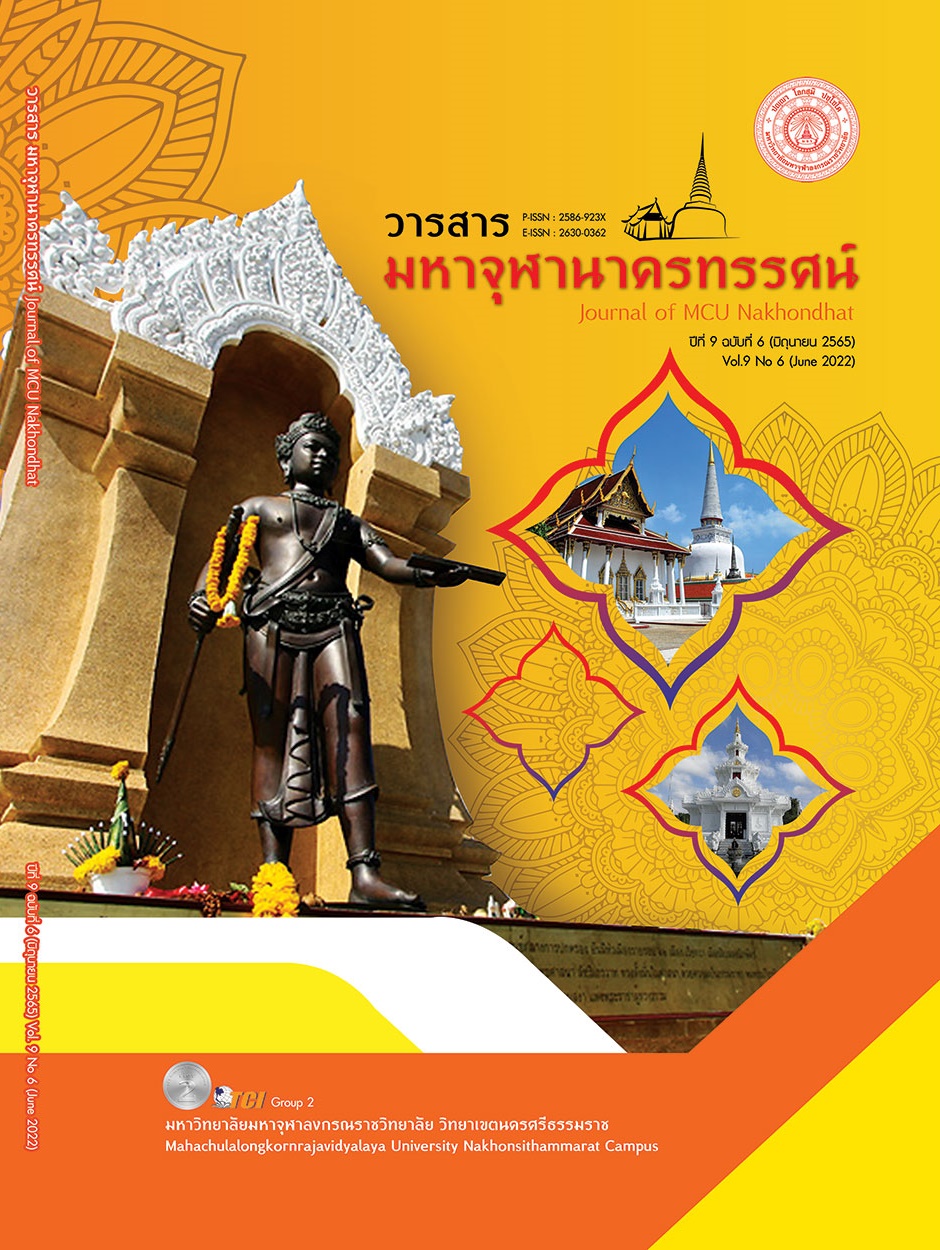THE 21st CENTURY LEARNING MANAGEMENT STRATEGIES OF TEACHERS, MAHASARAKHAM PRIMARY EDUCATIONAL SERVICE AREA OFFICE 2
Main Article Content
Abstract
This artistudy aimed 1) to study the current state, the desirable state, and the modified priority needs state of learning management strategies of teachers in the 21st century and 2) to study the guideline for the development of learning management strategies for teachers in the 21st century , Mahasarakham Primary Education Service Area Office 2. Research and development type. There were two phases in the study. The first phase was studying of the current state, the desirable state, and the modified priority needs state of learning management strategies of teachers in the 21st century Mahasarakham Primary Education Service Area Office 2. The sample were 312 teachers. The research instrument was the questionnaires. the researcher made permission letter and collect data with samples. The second phase was the studying the guideline for the development of learning management strategies for teachers in the 21st century , Mahasarakham Primary Education Service Area Office 2. In this phase, were focus group discussion. The results are as follow: 1) to study the current state of learning management strategies of teachers in the 21st century Mahasarakham Primary Education Service Area Office 2. was high level in overall and the modified priority needs state of learning management strategies of teachers in the 21st century was high level in overall. and 2) to study the guideline for the development of learning management strategies for teachers in the 21st century , Mahasarakham Primary Education Service Area Office 2 which including 7 elements and 21 guidelines. The results of the guideline development were suitability at a very high level and the possibility was at the high level.
Article Details

This work is licensed under a Creative Commons Attribution-NonCommercial-NoDerivatives 4.0 International License.
References
ทิศนา แขมมณี. (2551). ศาสตร์การสอนองค์ความรู้เพื่อการจัดกระบวนการเรียนรู้ที่มีประสิทธิภาพ. พิมพ์ครั้งที่ 7.กรุงเทพมหานคร: สำนักพิมพ์แห่งจุฬาลงกรณ์มหาวิทยาลัย.
นันทนา วารินิน. (2557). รูปแบบการพัฒนาสมรรถนะการจัดการเรียนรู้ของครูสำหรับโรงเรียน สังกัด สำนักงานเขตพื้นที่การศึกษาประถมศึกษากำแพงเพชรเขต 2. ใน ดุษฎีนิพนธ์ครุศาสตรดุษฎีบัณฑิต สาขาวิชาการจัดการศึกษาและการเรียนรู้. มหาวิทยาลัยราชภัฏนครสวรรค์.
บุญชม ศรีสะอาดและคณะ. (2561). พื้นฐานการวิจัยการศึกษา. พิมพ์ครั้งที่ 8, มหาสารคาม: ตักสิลาการพิมพ์.
วีระชัย ศรีวงษ์รัตน์. (2559). การพัฒนาแนวทางเสริมสร้างสมรรถนะครูด้านการบริหารหลักสูตรและการจัดการเรียนรู้สำหรับ สถานศึกษาสังกัดสำนักงานเขตพื้นที่การศึกษาประถมศึกษาหนองคายเขต 1. ใน วิทยานิพนธ์ศึกษาศาสตรมหาบัณฑิต สาขาการบริหารและพัฒนาการศึกษา. มหาวิทยาลัยมหาสารคาม.
สายสุนีย์ เทพสุขเอี่ยม. (2562). การพัฒนารูปแบบการเรียนรู้ด้วยวิธีการค้นพบโดยใช้เทคโนโลยีสารสนเทศและการสื่อสารตามแนวคิดการมีส่วนร่วมของชุมชนนักปฏิบัติและชุมชนแห่งการเรียนรู้เพื่อพัฒนาทักษะการแก้ปัญหาของนักเรียนชั้นมัธยมศึกษาปีที่ 3 และการมีส่วนร่วมของชุมชน. ใน ดุษฎีนิพนธ์ครุศาสตรดุษฎีบัณฑิต สาขาการบริหารการศึกษา. จุฬาลงกรณ์มหาวิทยาลัย.
สำนักงานเขตพื้นที่การศึกษาประถมศึกษามหาสารคาม เขต 2. (2562). รายงานประจำปี. มหาสารคาม: กลุ่มงานและแผนสำนักงานเขตพื้นที่การศึกษาประถมศึกษามหาสารคาม เขต 2.
สำนักงานคณะกรรมการการศึกษาขั้นพื้นฐาน. (2544). การเรียนรู้บูรณาการยุทธศาสตร์ครูปฏิรูป. กรุงเทพมหานคร: อุษาการพิมพ์.
สำนักงานเลขาธิการคุรุสภา. (2556). คู่มือการปฏิบัติงานการต่อใบอนุญาตประกอบวิชาชีพทางการศึกษา. กรุงเทพมหานคร: สำนักงานเลขาธิการคุรุสภา.
สุพรรณี อึ้งปัญสัตวงศ์. (2553). การพัฒนารูปแบบการประเมินการจัดการศึกษาของคณะวิทยาศาสตร์โดยใช้บาลานซ์สกอร์การ์ด. ใน ดุษฎีนิพนธ์วิทยาศาสตรดุษฎีบัณฑิต ภาควิชาสถิติ. มหาวิทยาลัยขอนแก่น.
Good, C.V. (1973). Dictionary of Education. New York: McGraw – Hill.
Krejcie, R. V. & Morgan, D. W. (1970). Determining Sample Size for Research Activities. Educational and Psychological Measurement, 30(3), 607-610.


